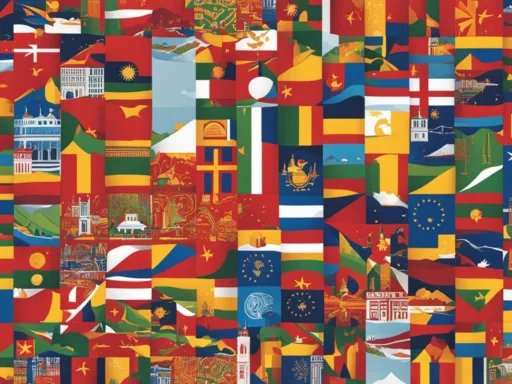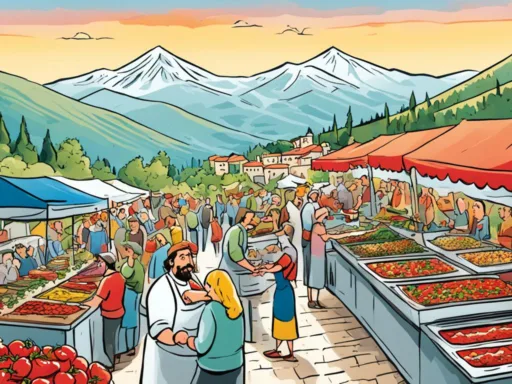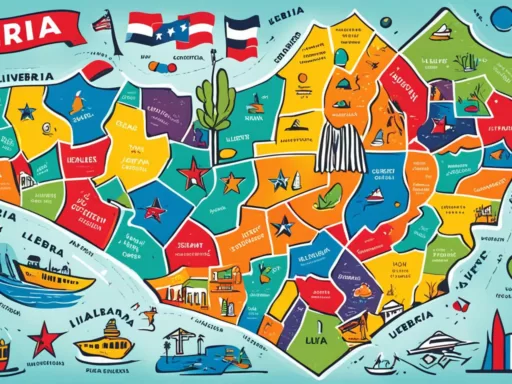When you think of Russian cuisine, what images dance through your mind? Is it the steaming bowls of borscht, the glistening of black caviar atop a blini, or the comforting embrace of a hearty Beef Stroganoff? As we embark on our latest culinary series, Russian Cuisine Discoveries, we’ll delve deeper than the staple dishes that have come to symbolize Russian food culture. From the tsar’s luxurious banquets to the common folk’s kitchen, there is a whole world of traditional Russian recipes and authentic Russian dishes to explore.
Join us in exploring Russian cuisine, where each stop on our journey unveils the incredibly diverse and rich tapestry of Russian culinary traditions. Prepare to be surprised by the variety and complexity as we reveal the evolution of meals that have sustained generations. This is not just another Russian food blog—it’s a voyage into the intricacies of flavors, history, and the people that make Russian cuisine truly extraordinary.
Key Takeaways
- Discover the depth of Russian culinary traditions and the historical influences that shaped them.
- Learn about the diverse array of traditional Russian recipes beyond the internationally known classics.
- Gain insights into the resilient and rich Russian food culture that thrives in a harsh climate.
- Uncover the stories behind some of the most celebrated and authentic Russian dishes.
- Experience the journey of exploring Russian cuisine through the eyes of locals and culinary experts.
The Roots of Russian Cuisine: A Historical Digest
Diving into the depths of Russian culinary heritage, we unearth a rich tapestry woven by centuries of history, encompassing a variety of Russian cooking techniques and traditional Russian recipes. This journey through Russia’s gastronomic past reveals a food culture that has evolved through the ages, reflecting the nation’s social and economic changes.
From Old Russian Staples to Modern Delicacies
The chronicles of Russian food culture start with Old Russian cuisine, a hearty fare built around bread, grains, and pies. These staples were essential for survival and were filled with locally sourced berries, mushrooms, and meats. As we move forward in time, opulent dishes from the Old Moscow cuisine began to signify social standing, with the rich indulging in meats and prized caviar.
The Influence of Geography and Climate on Traditional Eats
Russia’s vast geography and varying climates deeply influenced its culinary practices. Preservation methods such as pickling and smoking were paramount in colder regions, while southern areas with milder climates introduced a diversity of spices and produce to Russian palates. Each domain carved its identity into the common culinary foundation, adapting to the surroundings and resources available.
Soviet-Era Culinary Additions to the Russian Plate
With the onset of the Soviet era, Russian cuisine took a novel turn as it began integrating and adapting the plethora of national cuisines within the Soviet Union. This period marked a tighter integration between nutrition science and cooking practices, giving birth to dishes that were meant to serve the collective palate and health.
| Epoch | Staples | Cooking Influences | Culinary Expansion |
|---|---|---|---|
| Old Russian | Bread, grains, pies | Natural preservation | Foraging, fermenting |
| Old Moscow | Meats, caviar | Social symbolism | Luxury foods |
| Peter and Catherine the Great’s Era | Minced meats, varied dishes | European (particularly French) methods | New ingredients like potatoes, tomatoes |
| Soviet Era | Fusion of national cuisines | Scientific diet-based approach | Collective culinary identity |
The generational shift from traditional to contemporary shows how the foundations laid by the Old Russian and Old Moscow cuisines were splendidly built upon by later influences, eventually paving the way for the modern-day revival known as New Russian cuisine – a blend of historical reverence and innovative spirit.
Unraveling the Rich Tapestry of Ethnic and Regional Flavors
The essence of Russian food culture lies in its expansive variety that reaches far beyond the ubiquitous images of borscht and caviar. Russian gastronomy is a narrative of diversity, shaped by the nation’s unique multicultural spectrum. Each region introduces a set of flavors and ingredients that are native to their cultural and geographical landscape, contributing to a compilation of authentic Russian dishes that are as varied as the country itself.
Through the centuries, the vast terrains of Russia have provided a fertile ground for an assortment of traditional Russian recipes. This gastronomic mosaic is composed of the traditional fare of various ethnic groups, such as the Tatar people with their richly spiced meat dishes and the Sakha, known for their exotic use of underground cooking methods.
In the northern territories, where the sun barely crests the horizon during the long winter months, regional cuisine leans heavily on the use of preserved foods. Here, berries and fish become essential to the local diet, portraying the ingenuity borne out of necessity. The south, in contrast, offers a cornucopia of sun-kissed fruits and vegetables, giving rise to a different spectrum within Russian culinary traditions.

To further illuminate the vast diversity within the canvas of Russian cuisine, a comparative table is presented below, highlighting the distinct ingredients and culinary practices of various Russian regions:
| Region | Signature Ingredients | Culinary Practices |
|---|---|---|
| Northern Russia | Cloudberry, cod, pickled vegetables | Preservation techniques (e.g., pickling, fermenting) |
| Siberia | Local freshwater fish, pine nuts | Raw fish preparations, use of wild-foraged ingredients |
| Far East Russia | Kamchatka crabs, indigenous fruits, scallops | Seafood-focused diets, utilization of native produce |
| Volga Region | Carp, zander, sturgeon | Rich fish dishes, smoked and dried fish techniques |
| Central Russia | Root vegetables, mushrooms | Hearty stews and soups, mushroom foraging and pickling |
Russian culinary traditions echo the nation’s adaptability and resiliency, forged through the centuries of economic, social, and climatic challenges. Nonetheless, whether it be the invigorating cloudberry from the North, the prized Kamchatka crab from the Pacific shores, or the traditional smoked fish from the Volga River, each region has a story to tell, and they do it eloquently through their unique contributions to the panorama of Russian food culture.
Iconic Russian Soups and Stews: A Culinary Mainstay
Behold the reverence for soups within Russian culinary traditions, a true testament to their historical significance and the role they play in everyday life. These soups and stews are much more than mere sustenance; they are bearers of heritage, brimming with flavor, and connecting generations through shared experiences at the dining table.
The Sacred Ritual of Slavic Soup-Making
Russian Cuisine Discoveries often start with a pot of soup simmering on the stove, as each household boasts their own version of these traditional recipes. Honoring the age-old traditions, these soups are crafted with patience and care, where every ingredient plays a pivotal role in creating the harmonious blend of taste and aroma that’s unique to Russian kitchens.
Chilled Delights: Kvass-Based Soups and Beyond
When summer befalls the expanses of Russia, the tables are adorned with refreshing kvass-based soups like okroshka. These chilled delights, part of the authentic Russian dishes, offer a respite from the heat with their cool and tangy flavors, making them a seasonal staple for families seeking reprieve.
The Heartwarming Comforts of Shchi and Borscht
Traditional Russian recipes for shchi and borscht are steeped in not just the savory broth, but in the heartwarming stories that accompany each serving. Shchi’s humble cabbage and robust meats, along with the vibrant beetroot hues of borscht, embody the soulful nature of Russian culinary traditions, providing comfort on the coldest of days.
| Soup | Main Ingredients | Type | Regionality |
|---|---|---|---|
| Shchi | Cabbage, meat, carrots, potatoes | Hot soup | Pan-Russian |
| Borscht | Beetroot, meat, kidney beans, sour cream | Hot/Cold | Varies by region |
| Okroshka | Kvass, boiled potatoes, eggs, cucumbers | Chilled soup | Pan-Russian (Summer) |
| Svekolnik | Beetroot, sour milk, cucumber, dill | Chilled soup | Pan-Russian (Summer) |
Russian Cuisine Discoveries
When you begin exploring Russian cuisine, you step into a world where each dish tells a story of cultural exchange, regional diversity, and historical significance. Authentic Russian dishes are not just meals; they’re a reflection of the nation’s soul, shaped through centuries of tradition and cultural fusions.
Pancakes with a Past: The Blini’s Cultural Significance
Consider the humble blini: thin pancakes that epitomize Russian culinary traditions. These delicate crepes have been a symbol of the sun due to their round and golden appearance since pagan times. Celebrated during the festival of Maslenitsa, blini embody the rich tapestry of traditional Russian recipes that have been passed down through generations.

Drawing from a Wealth of Ingredients: Local Favorites
Pelmeni, the Russian answer to dumplings, offer a glimpse into the domestic side of the nation’s gastronomy. Often prepared in a communal setting, pelmeni are savored for their simple yet satisfying composition— a testament to the communal spirit embedded within Russian culinary traditions.
As we delve deeper into the pantry of Russian cooking, a pattern emerges—one of resourcefulness and reverence for the native flora and fauna. Below, we present a table of ingredients integral to traditional Russian recipes, each one underscoring the adaptability and ingenuity of this robust cuisine.
| Ingredient | Used in Dishes | Significance |
|---|---|---|
| Buckwheat | Kasha, Blini | A versatile grain, historically used for its hardiness and nutritional value. |
| Wild Berries | Varenye, Kissel | Sweet forest berries are reflective of Russia’s extensive wilderness and are used in a variety of preserves and desserts. |
| Freshwater Fish | Ukha, Coulibiac | Demonstrates the influence of Russia’s vast rivers and lakes on its dietary traditions. |
| Sour Cream | Borscht, Pelmeni | An essential condiment, offering a cooling balance to the hearty flavors in many dishes. |
Exploring the intricacies of Russian culinary traditions reveals more than just flavors; it unveils a rich narrative steeped in the past, yet continually evolving. As we partake in dishes that have stood the test of time, we’re truly tasting history, one authentic bite at a time.
Feasts Fit for Tsars: Grand Russian Dishes and Their Origins
Exploring Russian cuisine reveals a banquet of flavors fit for royalty. Dishes such as Beef Stroganoff, with its finely sliced beef smothered in a rich sour cream sauce, not only please the palate but also tell the story of French chefs who adapted their cooking to satisfy the tastes of the Russian aristocracy. Our Russian food blog takes you on a journey into these opulent creations, highlighting how simplicity and versatility coexist within extravagant culinary traditions.

Another classic epitome of Russian culinary traditions, syrniki, illustrates a humbler side of this grandeur. These modest pancakes, made from cottage cheese, serve as an example of how even the simplest ingredients are transformed into a fulfilling treat, showcasing the resourcefulness of Russian cooks. Each recipe, each ingredient speaks volumes about the culture’s ability to blend native elements with global influences, crafting dishes that have withstood the tests of time and history.
Here’s a taste of some grand dishes and their unique beginnings:
| Dish | Origins | Ingredients | Cultural Significance |
|---|---|---|---|
| Beef Stroganoff | 19th-Century Russian Aristocracy | Beef, sour cream, onions, mushrooms | Exemplifies fusion of French and Russian elite cuisine |
| Syrniki | Traditional peasant food | Cottage cheese, flour, eggs, sugar | Often served during breakfast, symbolizing home comfort |
| Kurnik | 16th-Century Russia | Chicken, rice, mushrooms, pancake layers | Associated with weddings and festivities; a pie of celebration |
| Pelmeni | Siberian origins with possible influence from Mongolian cuisine | Minced meat, dough, onions, spices | A versatile dish that can be served with a variety of broths and sauces |
Our love for exploring Russian cuisine reveals more than just ingredients and recipes—it uncovers stories of empires, cultural exchanges, and the rich tapestry of Russian life. We continue to explore these culinary delights, honoring traditional methods while also celebrating the modern twists that keep this food culture vibrantly alive.
Sweet Tooth Satisfactions: Exploring Russian Desserts
Stepping into the enchanting world of Russian food culture, one cannot help but be dazzled by the variety of sweet confections that are an integral part of Russian culinary heritage. The array of traditional Russian recipes for desserts is a testament to the creativity and resourcefulness of Russian bakers and confectioners, who have crafted authentic Russian dishes designed to bring joy and indulgence at the end of a meal or during a festive celebration.
Honey-Infused Wonders: The Story of Medovik
Among the most beloved sweet treats is the formidable Medovik, a sumptuous honey cake layered with history as rich as its flavor. The traditional recipe for Medovik involves delicate, thin layers of honey-enriched dough alternated with a sweet cream filling. Each succulent layer intertwines the essences of honey and spices, culminating in a dessert that is not only a feast for the palate but also an age-old favorite that continues to hold a special place in the hearts of dessert aficionados.
Regional Dessert Variations and Celebrated Confections
Delving deeper into the sweetness, one discovers a variety of regional dessert variations across Russia’s vast expanse. Each region adds its twist to the dessert table, incorporating locally sourced ingredients and treasured family recipes passed down through generations. From the creamy pastries of the western cities to the rich, fruit-laden treats of the rural countryside, these desserts are not merely end-of-meal delights; they are a vibrant expression of local traditions and the festive spirit of the Russian people.
- North: Zefir, a type of soft confectionary made with apple puree and egg whites.
- Siberia: Vatrushka, a pastry filled with quark, a type of fresh cheese, and topped with berries.
- Volga Region: Chak-Chak, sweet balls of dough drenched in honey and sometimes sprinkled with nuts.
Together, these desserts weave a tapestry that pays homage to the classic recipes that have defined the humble abodes and grand banquets alike. As carriers of the sweetness in Russian culinary heritage, they continue to be a source of pride and joy, and a delectable invitation to explore the depths of Russian gastronomy.
The Ceremonial Side of Russian Gastronomy: Holidays and Rituals
Within the rich tapestry of Russian culinary traditions, the festive celebrations and age-old rituals play a pivotal role in the cultural and gastronomic landscape. From the crisp winters of Moscow to the pastoral beauty of the Volga riverbanks, every Russian holiday is steeped in traditions that are lavishly reflected in the ceremonial dishes served. The harmony between authentic Russian dishes and the jubilant spirit of these commemorations narrates the story of a nation’s love for its vibrant heritage.
For many aficionados of Russian cuisine discoveries, there is a particular joy in delving into the festive foods that have graced tables during times of celebration for centuries. A Russian food blog dedicated to holiday feasting is a treasure trove of recipes that showcase the grandeur of these occasions, bringing them from the grand halls of history into the cozy modern kitchen.
One cannot speak of Russian holiday customs without honoring the quintessential New Year’s feast. This celebration pays homage to ‘Novy God’, a time when families gather to bid farewell to the old year and welcome the new with hope and sumptuous meals. Symbolic foods like ‘Olivier salad’, also known as Russian salad, and ‘Selyodka Pod Shuboy’ or herring under a fur coat, adorn tables, symbolizing abundance and prosperity.
| Holiday | Traditional Dish | Symbolic Significance |
|---|---|---|
| New Year’s Eve (Novy God) | Olivier Salad | Festivity and Prosperity |
| Christmas | Sochivo (Kutya) | Purity and Remembrance |
| Maslenitsa | Blini | Welcoming the Spring |
| Easter | Pashka and Kulich | Resurrection and Joy |
During Maslenitsa, a weeklong festival welcoming spring, the air is fragrant with the sweet, buttery scent of blini, signaling the end of winter and rebirth of the earth. These traditions, among others, are not just mere rituals; they are a celebration of life itself, narrated through the language of food.
Ultimately, Russian cuisine is not just about sustenance but also about the celebration of life’s milestones, the embrace of family and community, and the honoring of longstanding traditions that have been passed down through generations. The ceremonial side of Russian gastronomy underscores how each dish, each ingredient, weaves together the fabric of Russian life, creating a culinary canon that is as devout as it is delightful.
Contemporary Twists on Authentic Russian Dishes
As we continue exploring Russian cuisine, it’s impossible not to be captivated by the current renaissance breathing new life into authentic Russian dishes. The food landscape is experiencing a surge of creativity, led by trailblazing chefs and rising stars in the Russian food blog community. They are propelling the cherished Russian culinary heritage forward, blending the reverence for tradition with a passion for innovation. This novel approach is infusing the food scene with fresh flavors while remaining deeply connected to the roots of Russian gastronomy.
From Farm to Table: The New Russian Cuisine Movement
The New Russian Cuisine movement champions a return to the farm-to-table ethos, strengthening the bond between local producers and the dining table. This modern wave foregrounds sustainability and celebrates the quality of locally sourced ingredients. Restaurateurs and consumers alike seek to rediscover the country’s bountiful produce, crafting dishes that resonate with the authentic Russian palate yet speak to the present-day sensibilities of gastronomes.
Rising Stars in the Russian Food Blog Scene
A vibrant community of food bloggers is essential to the evolution of Russian cuisine. These culinary connoisseurs are not just guardians of the nation’s epicurean past; they are architects of its future. Through their dedication to reviving and reimagining authentic Russian dishes, each blog post serves as both a homage to the ancestral table and an invitation to the feast of tomorrow. Their writing, rich with anecdotes and seasoned with personal insights, disseminates a renewed passion for Russian flavors, inspiring both domestic cooks and international audiences.
With each bite of reinvented classics and each story shared through these blogs, a new chapter of Russian culinary heritage is written. The synergy between tradition and innovation shapes a dynamically evolving narrative, promising a delicious journey for those intrigued by the transformative power of food.
Conclusion
Embarking on a culinary journey through Russian Federation unveils a narrative that spans centuries, seamlessly blending tradition with innovative gastronomy. This unique fusion has given rise to a vibrant Russian food culture that continues to reinvent and reclaim its prestigious culinary heritage. This final act of our exploration isn’t just a retrospective— it is a reflection on how the traditional Russian recipes and dynamic modern creations coexist, generating new Russian Cuisine Discoveries that are as diverse as they are delicious.
The Reinvention and Reclamation of Russian Culinary Heritage
The resilience and adaptability of Russian cuisine are evident in its tenacity to integrate new techniques and ingredients while honoring the timeless rituals that make it so distinctive. From the flaky pirozhki to the rich stews that have warmed generations, Russia’s culinary offerings have evolved without losing the essence of a rich Russian culinary heritage. This ongoing metamorphosis of Russian gastronomy ensures that the flavors we cherish today are both an ode to the past and a prelude to future discoveries.
Invitation to the Table: Embracing and Sharing Russian Food Culture
As we reach the conclusion of our flavorful excursion, it becomes clear that the essence of Russian cuisine is not just found within its varied dishes but also within the spirit of community and sharing that it fosters. This universal invitation to the table transcends culinary boundaries, beckoning gourmets and beginners alike from every corner of the globe to discover, engage with, and celebrate the cornucopia of tastes that Russian food culture has to offer. In this spirit, we part with an open invitation to readers everywhere to immerse themselves in the heartwarming and palatable journey that Russian culinary traditions provide.






